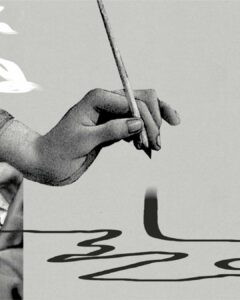

Many Armenians in the diaspora have two homelands in their heart: Armenia and Lebanon. The country was a safe haven for persecuted minorities in the Middle East and was for decades the cultural and political center of the Armenian diaspora. Hundreds of thousands of survivors also passed through Beirut on their way to warmer climes across seas and oceans.
Lebanon is not just an adopted country, it is also an extension of Armenian Cilicia, abandoned by France to Kemalist Turkey in 1921. Even today, the Lebanese-Armenian community, diminished by periodic waves of emigration, perpetuates the habits and customs of the former Armenian-Cilician centers of Marash, Hajin, Sis and Ainteb. Historian Ara Sanjian has described the Armenian presence in Lebanon as insular and autonomous.
This exceptional political situation in Lebanon is unique in the Middle East and Lebanon’s Armenians have adapted to the country’s governance system of consociationalism, also known as “personal-based federalism”. This political system was borrowed from Ottoman tradition, the French jurists in charge of the mandate over Lebanon, and local traditions that mediated inter-community relations.
The principle of mutual recognition of communities defined by their confessional affiliations, although seeming anachronistic today, has contributed enormously to the development of the Armenian community in Lebanon. According to this principle, all officially recognized communities are endowed with a legal personality at state level, which implies a system of collective rights and duties, including cultural rights.
Lebanon is the only country outside the Republic of Armenia to have Armenian ministers in government, and the Armenian community has a quota of five members of parliament. January 6, the date of the Armenian Orthodox Christmas, is a public holiday. During the civil war from 1975 to 1990, the three so-called traditional Armenian political parties (ARF Dashnaktsutyun, Social Democrat Hunchakian Party and the Ramgavar Party) huddled behind the slogan of “positive neutrality” in the conflict. This decision meant severe reprisals for the Armenians of Bourj Hammoud, who resisted the attempts of the Lebanese Phalangists to control all Christian sectors of the country.
Throughout the war, Armenian political forces demonstrated a deep attachment to Lebanese national unity.
From the 1960s onward, Beirut served as the cultural hub of the diaspora for a generation. This was due to the dynamism and pluralism of its press, publishing houses, schools and colleges. As a result, Armenian-Lebanese individuals living in Europe, North America and Australia played a significant role in the transnational political and cultural dynamics of the Armenian world. This phenomenon is unmatched by any other Armenian diaspora community.
In this respect, Lebanese Armenians are over-represented in the category of “identity entrepreneurs”. Their perfect knowledge of Armenian and Eastern and Western cultures has enabled them to acquire positions of responsibility in a number of fields that require cultural competencies, including research, business, as well as the arts and culture.
Unfortunately, the Armenian-Lebanese community has experienced a demographic and intellectual decline. In the 1980s, the community had three chairs of Armenology, located at the Haigazian University, Saint Joseph’s University and the Hamazkayin Institute. This decline is concerning, especially if the leading executives, politicians and spiritual leaders fail to address the issue of the need for a strategic vision for the future of this very significant diaspora community.
Developing a Strategic Vision
In 1920, there were three plans for national homes for Eastern Christians: an autonomous Cilicia under French protection, a Christian Assyria under British protection, and a predominantly Maronite Lebanon under French protection. Only the last of these came to fruition in 1920. Today, the foundations of the fragile Lebanese state are more compromised than ever due to the appalling socio-economic and political situation in the country.
Internally, the Armenian community is running out of steam because it has been unable to update its discourse beyond a focus on the ghettoization of identity, the Armenian cause and a lack of understanding of local and regional issues. As a result, the community has split into two factions. On the one hand, traditional structures are becoming increasingly inward-looking, while on the other hand, the individuals who have gained social status in their respective roles are increasingly detaching themselves from their Armenian roots and assimilating with dominant Christian elements.
A closer look reveals many similarities between Lebanon’s vulnerability and the situation in Armenia: Lack of confidence in the collective, lack of political alternatives and absence of a strategic vision capable of bringing about a national recovery.
Among the potential and the tools available to the two friendly countries, their joint membership in the international organization of the Francophonie emerges as key. This multilateral forum brings together 88 states and governments to build an alternative to Anglo-Saxon globalization and a Western-centric vision. This is where Armenians and Lebanese have much to do in the name of the principle of cultural exception, a concept in international law and cultural policy. It is a set of provisions designed to make culture an exception in international treaties, particularly with the World Trade Organization. The concept is perfectly applicable to the Armenian and Lebanese cases for a very simple and obvious reason: Both countries have provided refuge for the region’s persecuted and oppressed. The Republic of Armenia was a sanctuary for Western Armenian and Yezidi victims of the 1915 genocide as well as for Assyrians persecuted in Iran in the 19th century. Cilician Armenians, Maronites and Druze persecuted in the past have made Lebanon a refuge, a singular country in terms of its size, its mountainous terrain and, above all, its spiritual vocation: a land of messages, to paraphrase the words of Pope John Paul II during his historic pilgrimage to Lebanon in 1997.
Taking these factors into account, it should be stressed that Armenia and Lebanon are bulwarks against ideologies that aim to crush all differences. Hence the importance of developing a strategy to promote the tangible and intangible heritage of these two countries through the promotion of cultural exceptionalism. To this end, the French-speaking world acts as a strategic tool, enabling both Beirut and Yerevan to make the voices of refugees heard, and to serve as an international platform for closer ties.
It is the responsibility of every political player, but also of Armenian and Lebanese artists and intellectuals, to be aware of this mission, which consists in refusing fatality and carrying the seeds of new hope.
Also see
Bridging the Scholarship Gap: Armenian Society of Fellows
Following the 2020 Artsakh War, the diaspora’s engagement generated innovative solutions and more notably, a sense of urgency. The Armenian Society of Fellows, a network of experts and scholars from the Armenian Diaspora and Armenia, is one of those initiatives.
Read moreWhat Is the Future for Armenian Media?
In this opinion piece, journalist and researcher Tigran Yegavian explores the current and future challenges facing Armenian media in the diaspora and Armenia.
Read moreEthiopian-Armenians: Ancient Allies and Imperial Confidants
Ethiopian-Armenians are emblematic as a diaspora community that balanced their civic and cultural identities to build a prosperous and trusted community.
Read moreCanadian-Armenians: From Highlands to the Farmlands of Georgetown
In the early 1920s, 148 orphans of the Armenian Genocide were brought to Canada to begin a new life. They were known as the Georgetown boys and girls and their legacy forms the basis of the Canadian-Armenian story.
Read more




